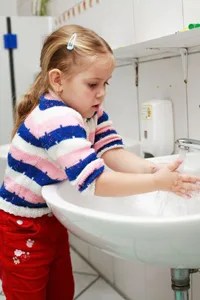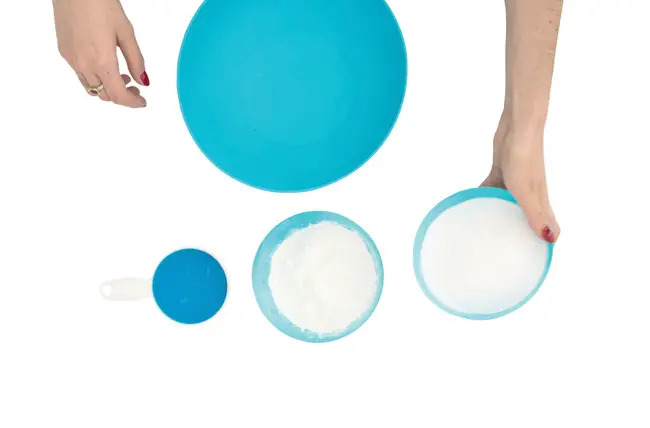 It never fails. The cold weather moves in, and soon your kids are bringing home more than math problems and reading assignments – they’re carting back the sniffles, sneezes, and sore throats of the 30 or so other children who share their classroom. And if you’re not careful, these school-borne germs can easily spread to every member of your household. “About 65 percent of all colds are caught in the home,” says Philip Tierno, Ph.D., director of clinical microbiology and immunology at New York University Langone Medical Center.
It never fails. The cold weather moves in, and soon your kids are bringing home more than math problems and reading assignments – they’re carting back the sniffles, sneezes, and sore throats of the 30 or so other children who share their classroom. And if you’re not careful, these school-borne germs can easily spread to every member of your household. “About 65 percent of all colds are caught in the home,” says Philip Tierno, Ph.D., director of clinical microbiology and immunology at New York University Langone Medical Center.
But while these unwelcome germs are virtually inevitable at this time of year, there are a few things you can do to keep your family healthy. Since 80 percent of all infectious diseases are transmitted by direct and indirect contact, Dr. Tierno says, the most important safeguard is good personal hygiene. Add good household and food hygiene onto that (along with a little common sense), and you’ve got a triple strength defense against germs. Below, Dr. Tierno shares some insights from his book The Secret Life of Germs: What They Are, Why We Need Them, and How We Can Protect Ourselves Against Them.
1. Wash hands regularly and thoroughly. Hand washing is one of the most effective things you can do to safeguard your health and should be done both before eating or drinking and before touching your mouth, eyes, or nose (these are entrance points for germs). For best results, wash hands to the tune of “Happy Birthday,” sung twice, or about 15-20 seconds. Make sure to clean in between fingers, the top and bottom surfaces of hands, and under the nail bed.
2. Teach your child proper etiquette for coughing and sneezing. Do not cough or sneeze into your hands; instead, use a tissue or the crux of your arm. “Kids tend to wipe mucus on their sleeve, but it’s all a matter of education,” Dr. Tierno says. “My grandson is 5 now, but even when he was 3 he kept little packs of tissues in his pocket, and he couldn’t wait to sneeze so he could use them. You have to make it like a game.”
3. Be a good role model. Parents should be aware of their own actions to set a good example for their children.
4. Sanitize shared surfaces in the home – such as doorknobs, computer keyboards, telephones, and dining surfaces – with germicidal agents such as Clorox® or Lysol® which clean and disinfect. Dr. Tierno recommends Clorox® Disinfecting Wipes because the formula kills just about every known virus, including the stomach virus. Sanitizing should be done regularly, but becomes even more important when you have a sick child in the home.
5. Use a HEPA filter vacuum cleaner, which picks up small – and potentially hazardous – particles that other vacuums simply recirculate back into the air of your home.
6. Practice good food hygiene. Surprisingly, 50-80 percent of food-borne illnesses are caught in the home, says Dr. Tierno. E-coli and salmonella, which can cause infection, may be present in your own kitchen due to improper food preparation. To avoid these serious maladies, sanitize your countertops and cooking surfaces regularly, always use a clean cutting board, and avoid mixing uncooked plant- and animal-based foods.
Also see:
How do I Know if it is the Cold or Flu?





















